Birds
Birds are characterized as warm-blooded (endothermic) vertebrates with a body covered in feathers. Birds have wings, bills, lay eggs, and are typically capable of flight. Feathers are essential for both temperature regulation and flight. Birds are also lightweight and have specially structured hollow bones.
-
Songbirds
The scientific order for songbirds or small perching birds is passeriformes. Passerines are the largest groups of birds, including more than half of the world’s species! They are characterized as being anisodactyl: they have three toes in front and one toe in back. This toe arrangement allows these small birds to be well adapted for perching.
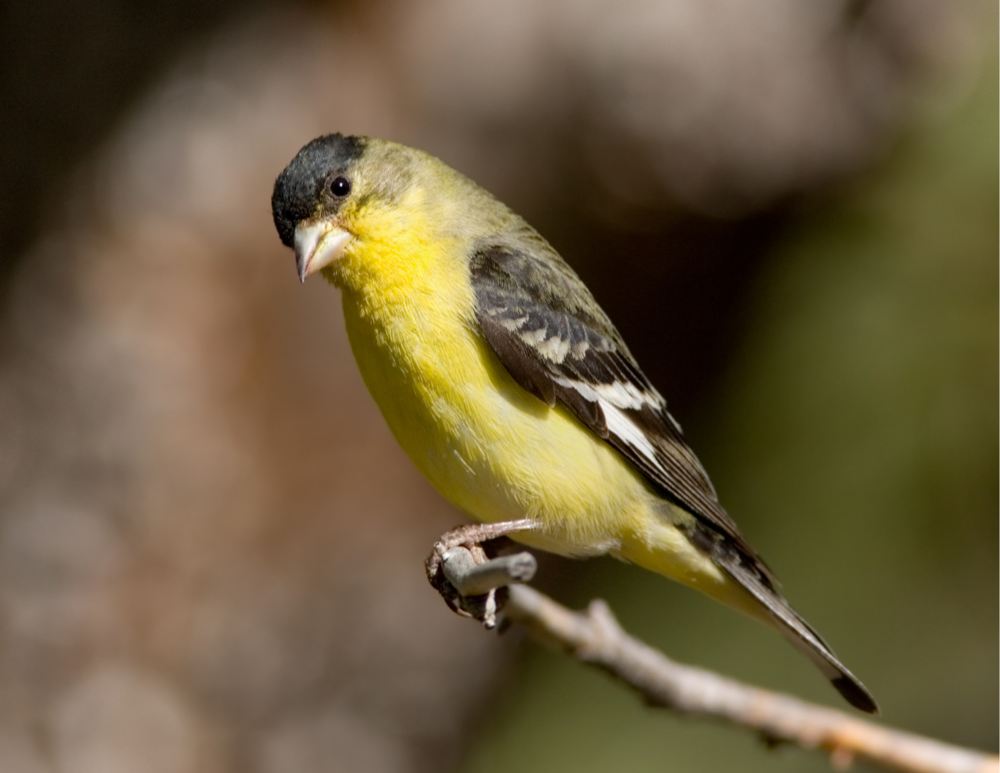
A lesser goldfinch perches on a small stick Lesser Goldfinch (Spinus psaltria)
One of the most common songbirds we see year-round at the Nature Center are goldfinches. Lesser goldfinches differ from American goldfinches by having slightly less yellow on their backs, and sometimes being described as having an olive color. Lesser goldfinches are active during the day eating seeds and thistles.
These birds are native to Southwestern North America. They are often seen in groups. During breeding season, males usually create complicated songs imitating the voices of other birds.
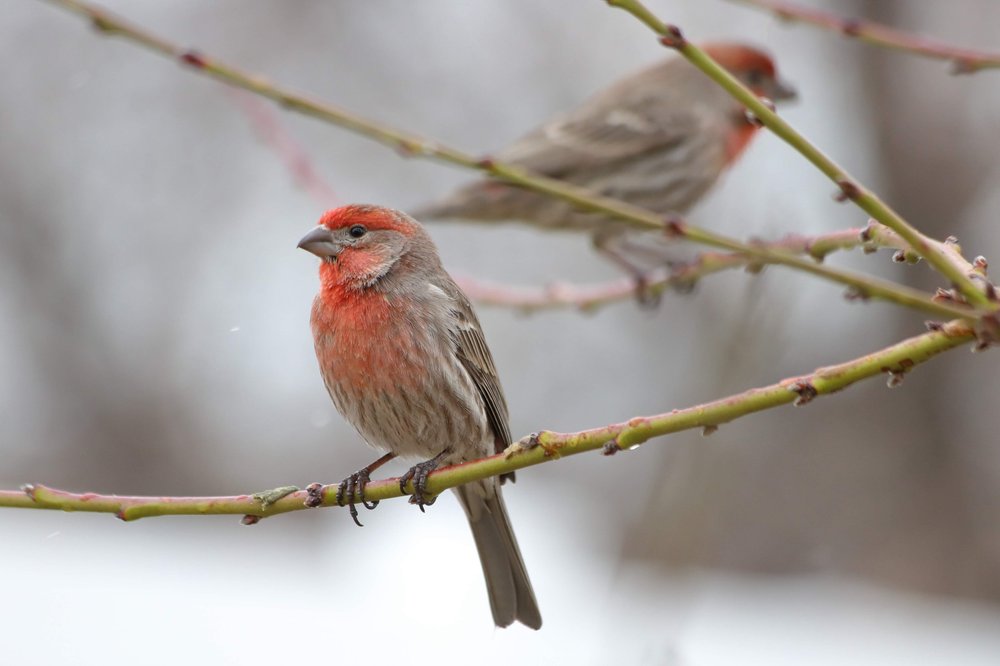
Two male house finches perch in a tree House Finch (Haemorhous mexicanus)
Another common songbird along the Jordan River is the house finch. These birds, like many birds, are sexually dimorphic. While the males have a bright red head, the females are completely brown.
House finches are social birds and are rarely seen alone. These birds are common throughout North America. They can be found in rural and urban areas and might be spotted in your own backyard!
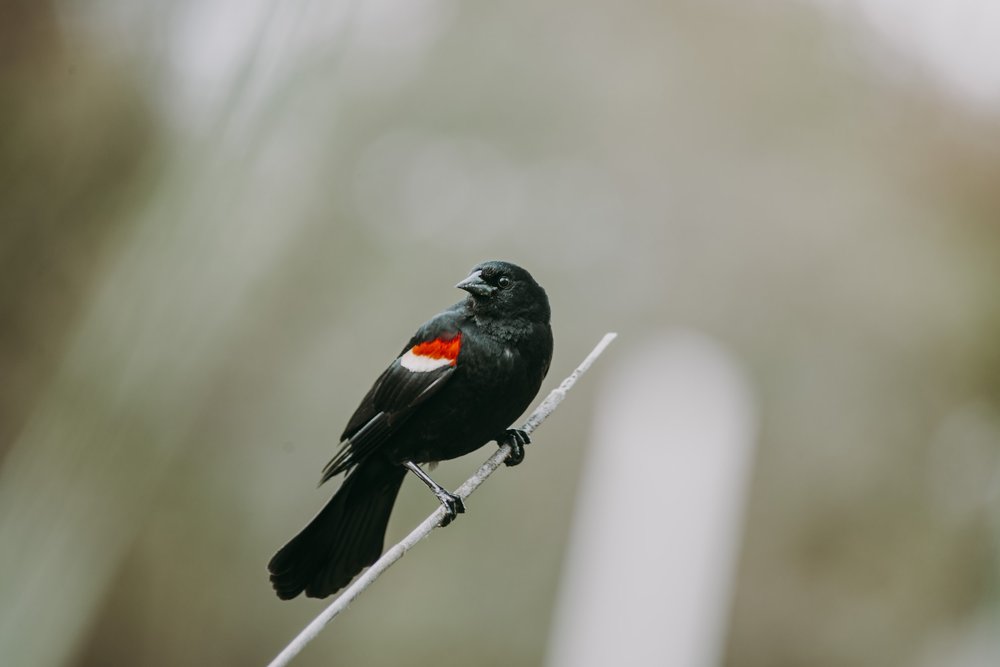
A red-winged blackbird perches on a stick Red-winged Blackbird (Agelaius phoeniceus)
The distinctive call of the red-winged blackbird is common year-round in Utah wetlands. These birds roost in flocks, with a dominant male defending the territory. During breeding season, he will chase other males out of the territory and attack nest predators, sometimes going after much larger animals, including horses and people.
These birds are omnivorous, eating things like seeds and grains as well as bugs and insects.
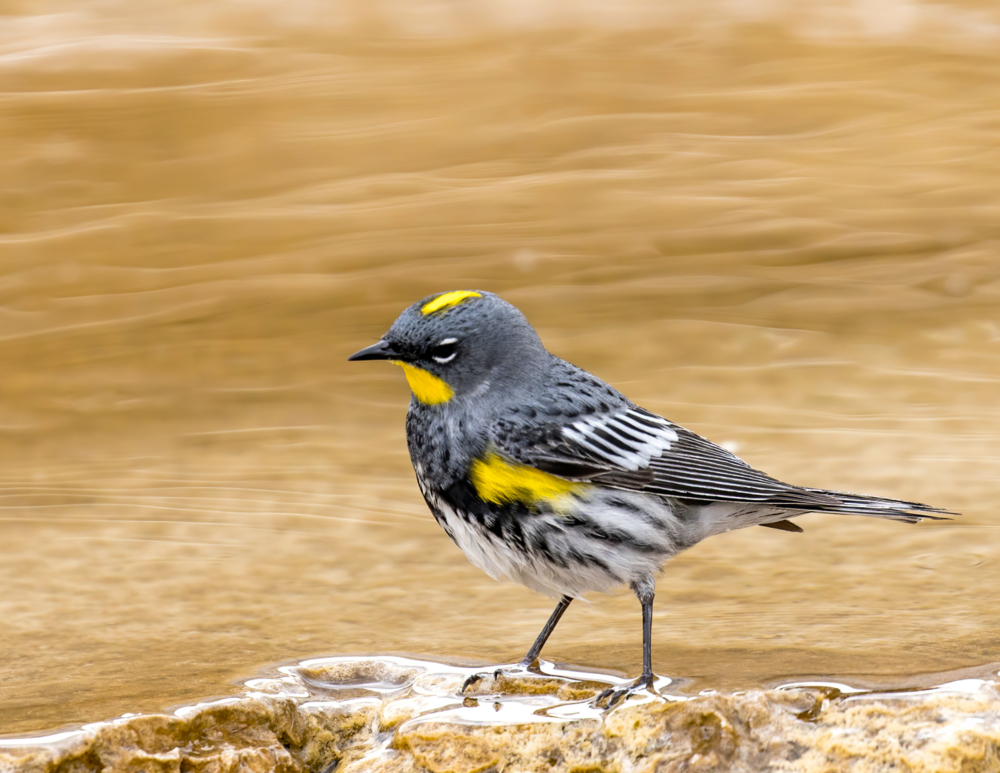
A yellow-rumped warbler stands on a rock by water Yellow-rumped Warbler (Setophaga coronata)
One of the most common and widespread warblers, this bird can be seen in Utah during the spring and fall migrations.
Males and females share the same color pattern, but the colors on females may appear duller overall and markings less distinct than males. Coloration may vary depending on the subspecies.
They have developed unique gastrointestinal traits to allow them to feed on waxy berries such as bayberries and wax myrtle along the East Coast.
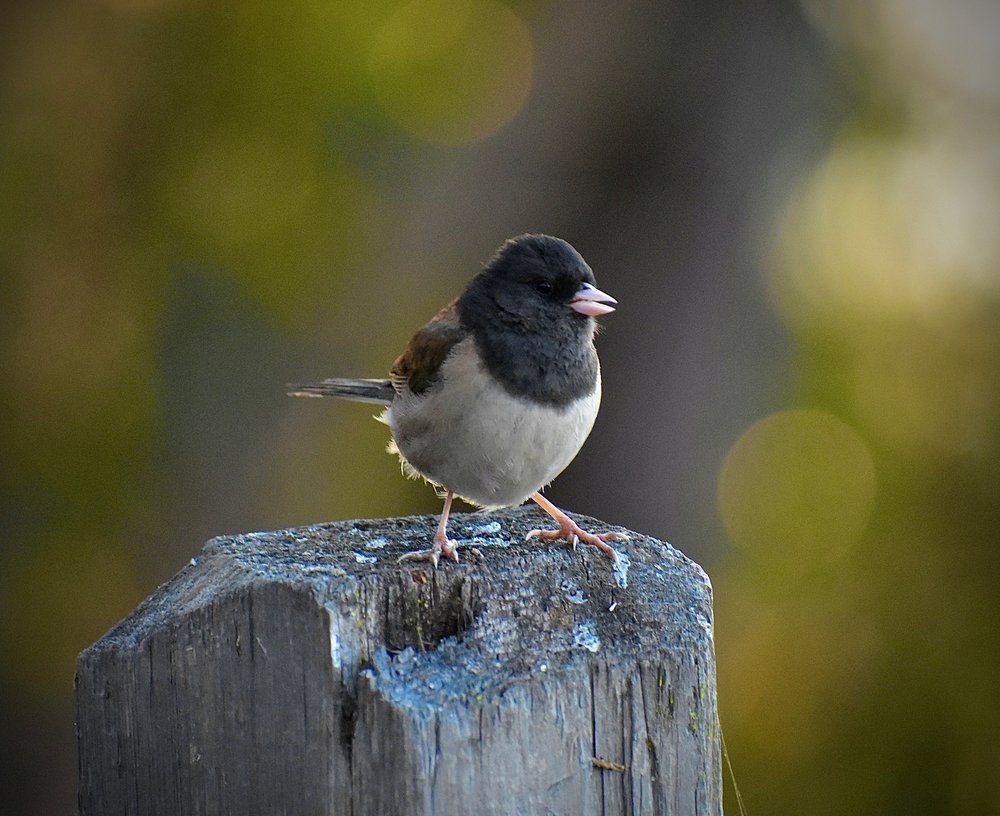
Dark eyed junco stands upon a fence post Dark-eyed Junco (Junco hyemalis)
These birds come down to the Jordan River during the colder winter months. It breeds in the mountain areas of the state, but winters in the valleys.
Dark-eyed juncos forage on the ground, picking up a wide variety of seeds and some insects. Dark-eyed juncos, like many other bird species, play an important role in the dispersal of seeds and help to control insect populations.
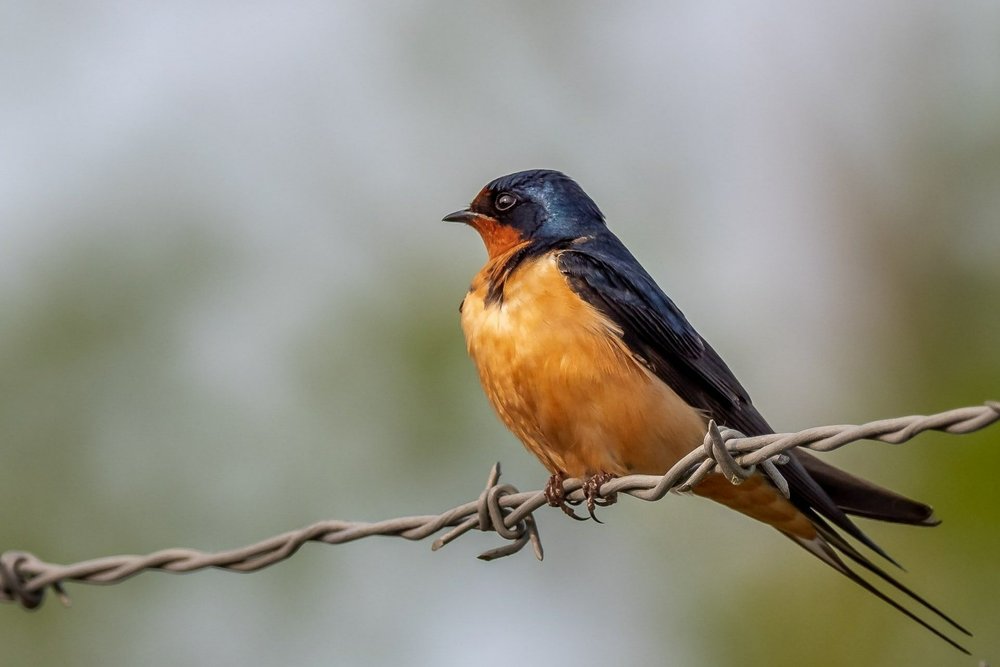
Barn Swallow perches on a wire fence Barn Swallow (Hirundo rusticas)
Barn swallows are very adaptable and can nest anywhere with open areas for foraging, a water source, and a sheltered ledge. Nests are made of mud and lined with grass and feathers.
These birds eat on the move, catching most of their prey during flight. They forage opportunistically, and have been observed following tractors and plows, catching the insects that are disturbed by the machinery. They drink water by skimming the surface of a body of water while flying.
-
Waterfowl and Shorebirds
Birds that spend time near or in water and possess webbed feet are referred to as waterfowl. Most are strong swimmers with waterproof feathers. Birds that spend their time near water and possess long legs for wading are called shorebirds. They usually stick near the shores and in the shallows while hunting. Continue reading to learn about the waterfowl and shorebirds you might see along the Jordan River.
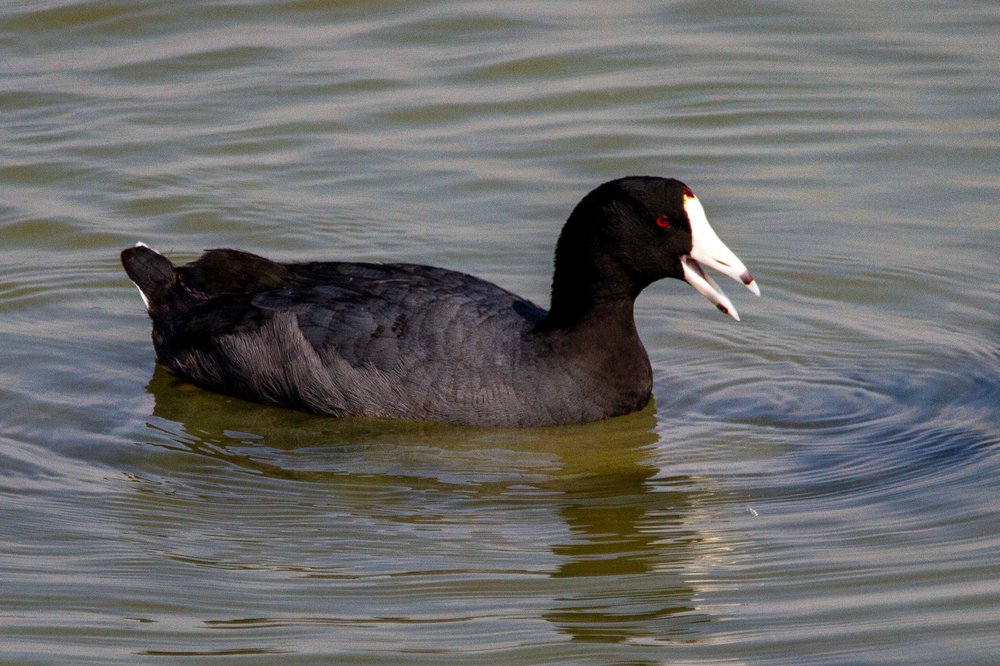
American coot swims in some water American Coot (Fulica americana)
Although this bird looks like a duck, coots belong to the Rallidae, or rail, family. In fact, their feet are not webbed but have long toes with broad lobes of skin that help it kick through the water.
These birds swim in the open and walk about on shore, making themselves at home on golf courses and city park ponds. They are omnivorous, eating both insects and vegetation. You may see an American coot both dabbling at the surface, or diving under the water to forage for food.
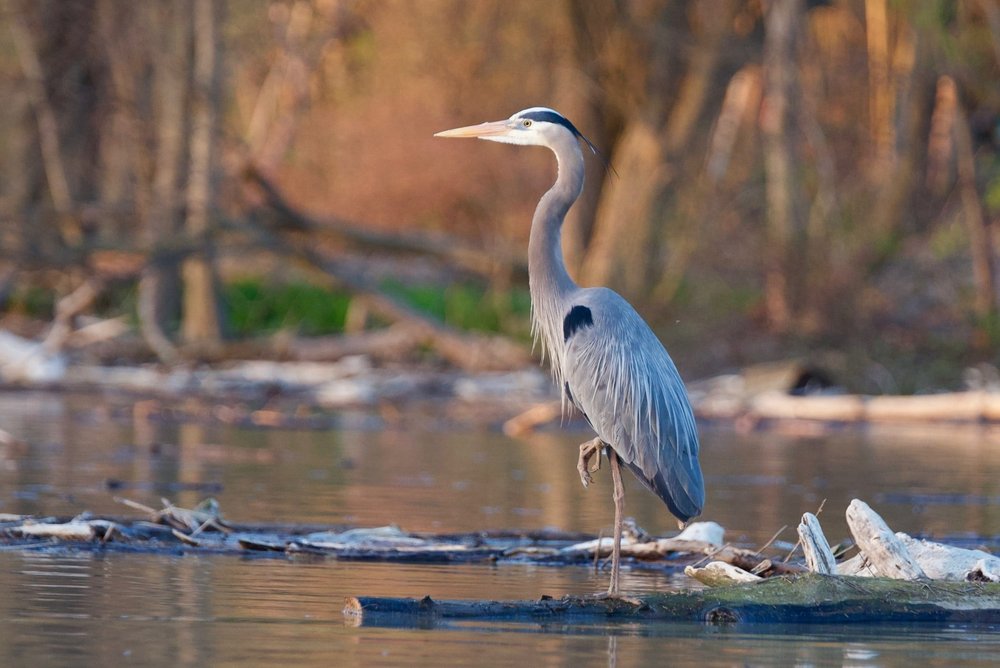
A heron stands upon a log, floating in a body of water Great Blue Heron (Ardea herodias)
Great blue herons nest in tall trees near water. They are “stalk and strike” hunters. They use their long legs to wade into shallow water and their spear-like bill to catch their prey. They typically eat fish, but may also eat insects, amphibians, and small mammals.
These herons have special feathers on their chest that fray into a powder. They comb this “powder down” with a fringed claw on their middle toes, to remove fish slime and other oils from their feathers.
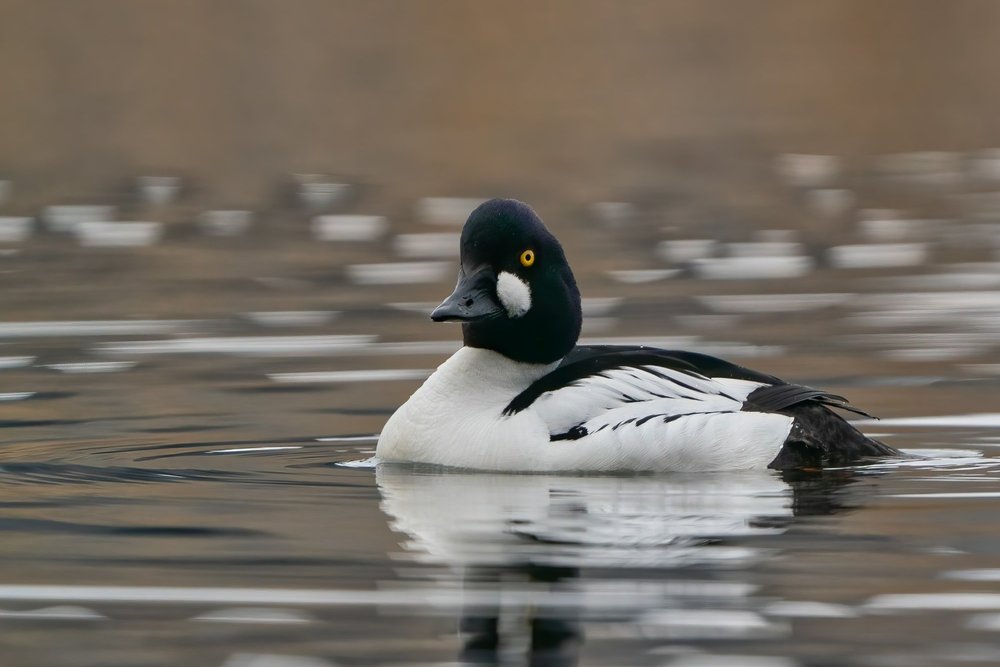
Goldeneye swims in a body of water Common Goldeneye (Bucephala clangula)
Common goldeneyes spend most of their time in water. However, they tend to nest in cavities of tall trees. The young leave the nest merely 24 to 36 hours after hatching. The mother attends the nest cavity entrance until all of the young jump to the ground.
These birds do a spectacular courtship display in which the males throw their heads back, then thrusts his head forward again while kicking the water with his feet.
-
Birds of Prey
Birds of prey are birds that hunt and eat other animals. This group diurnal (active during the day) species such as eagles, hawks and falcons and nocturnal (active during the night) species like owls. All these birds have three important characteristics: sharp eyesight, sharp beaks, and sharp talons on their feet.
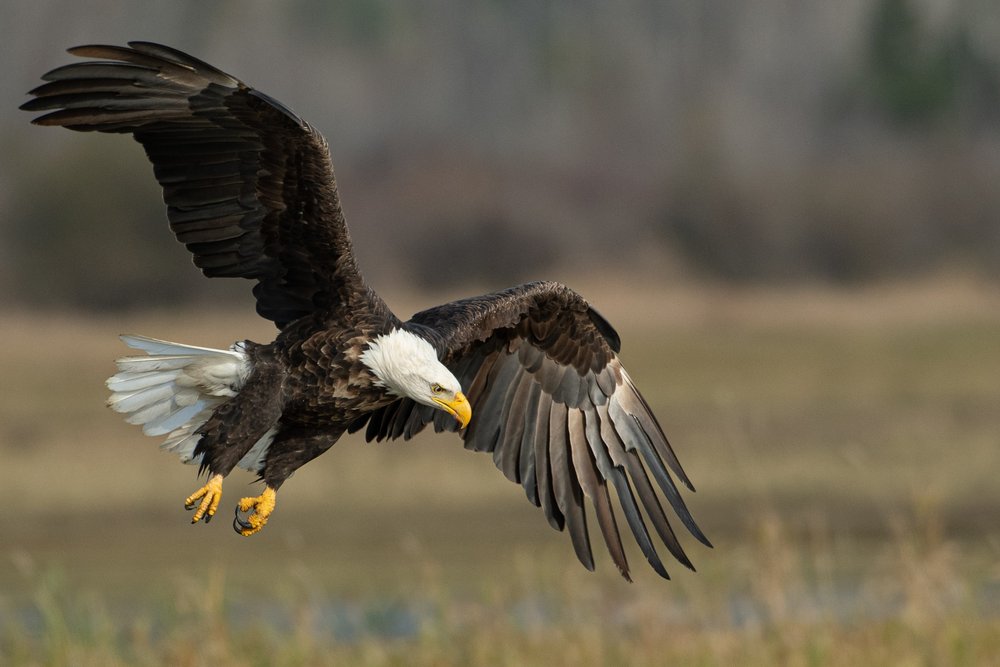
A bald eagle swoops down over a field Bald Eagle (Haliaeetus leucocephalus)
You may be surprised to learn that bald eagles can be seen along the Jordan River Parkway, searching for their preferred meal of fish. In 1963, bald eagles were extremely endangered, with less than 417 breeding pairs left in the United States. Due to widespread conservation efforts, they have recovered and are currently listed as a species of least concern according to the IUCN Red List of Threatened Species.
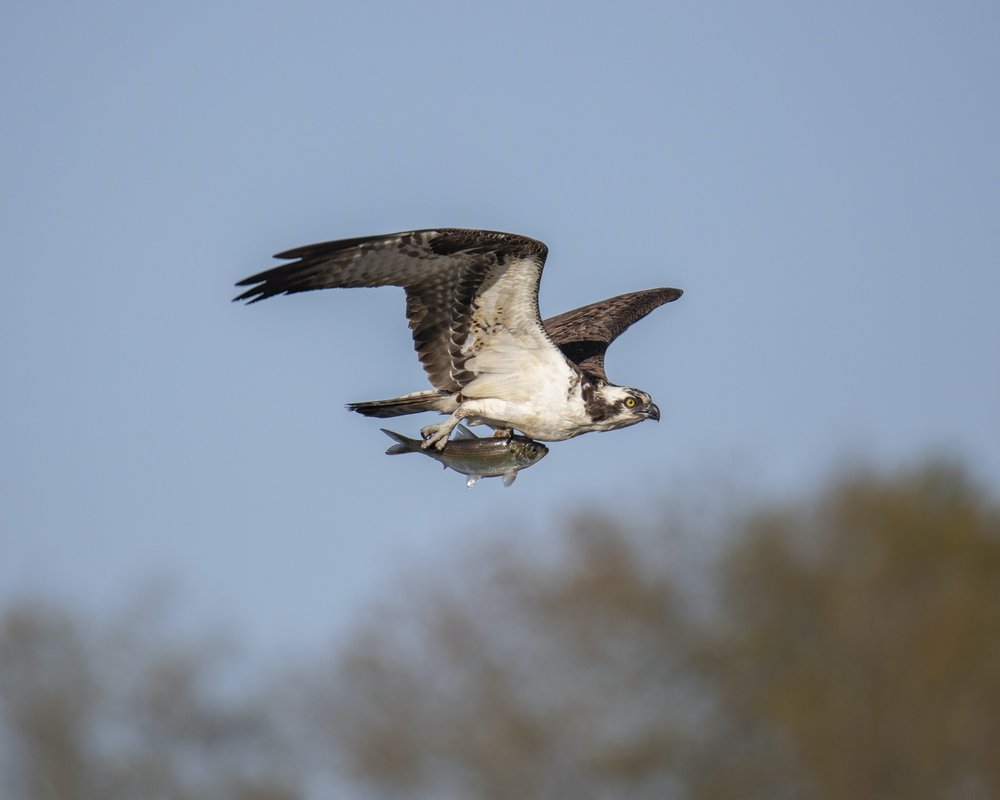
An osprey soars while carrying a fish Osprey (Pandion haliaetus)
Another bird of prey that specializes in catching fish is the osprey. These birds can be found near water sources that have an abundant supply of fish.
Like all raptors, ospreys catch their prey with their feet. However, they have several adaptations specifically to catch fish. Ospreys have relatively long legs for a raptor, spiny footpads called spicules, and a reversible outer toe to aid in gripping slippery fish. In addition, ospreys have dense oily plumage and efficient nasal valves that prevent water from entering the nostrils when the bird dives to catch a fish.
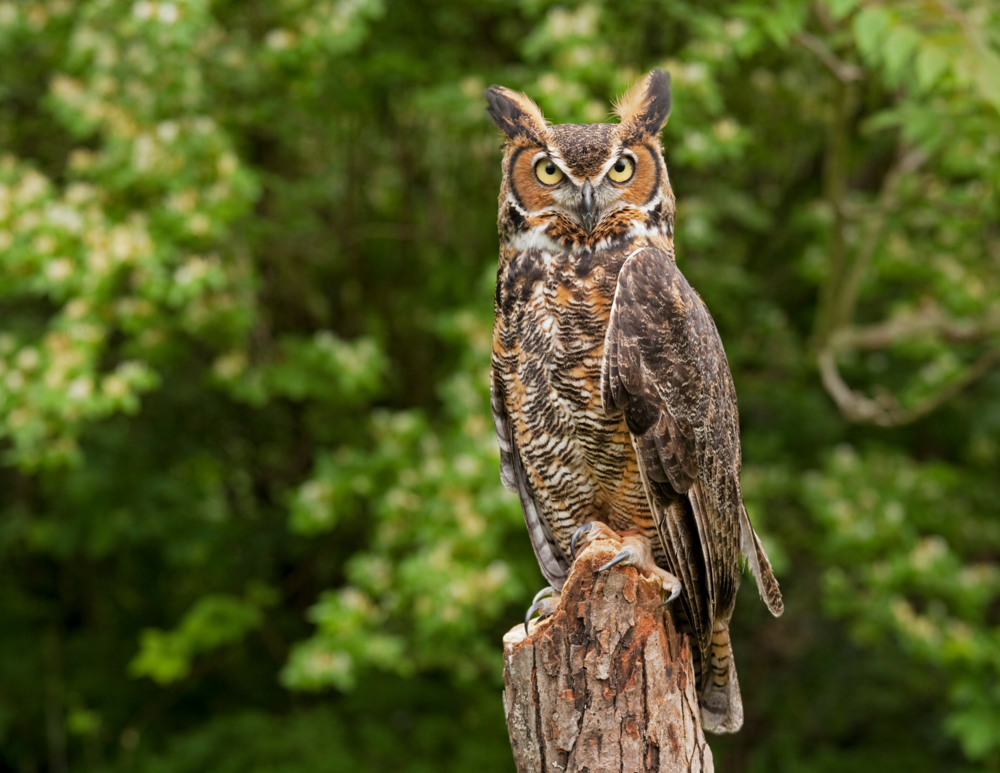
A great horned owl sits upon a tree stump Great Horned Owl (Bubo virginianus)
Nearly everything about the great horned owl helps it to be an extraordinary hunter.
They have an acute sense of hearing that is aided by asymmetrical ears and specialized feathers surrounding their face. Their flight feathers are also extremely soft, allowing for near silent flight. Owls also have excellent eyesight. Their eyes don’t move in their sockets, but they can swivel their heads nearly 270 degrees to look in any direction.
-
Other Birds
There are many other types of birds that visit the Jordan River. The types of birds you can spot will often depend on the time of year. While some birds are here for breeding season, others only pass through during spring and fall migration. You never know what you’re going to find along the river!
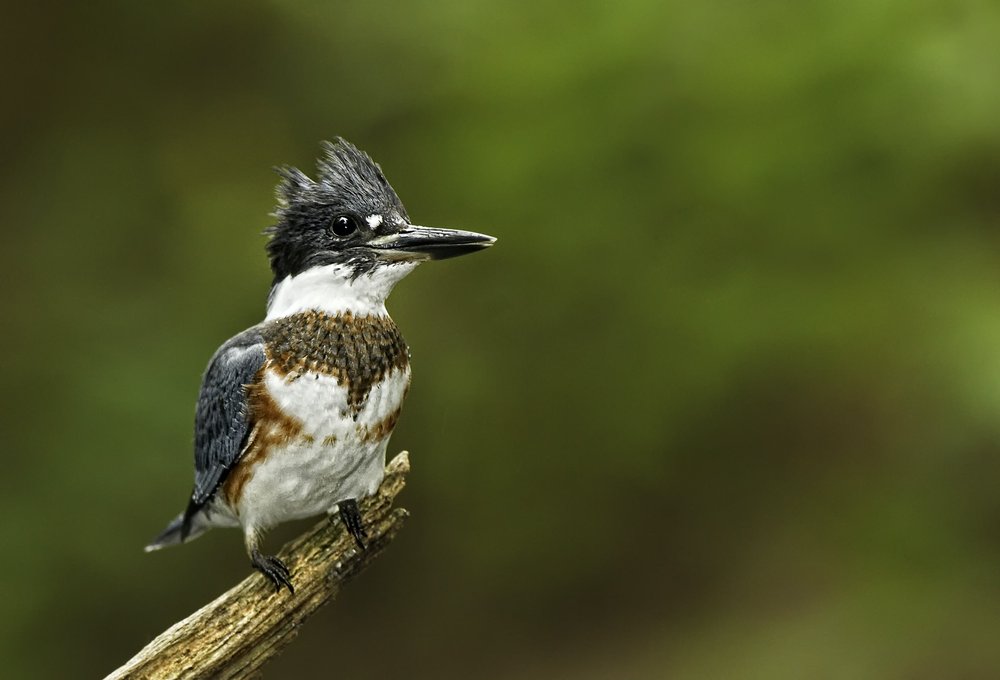
Kingfisher perches on a branch Belted Kingfisher (Megaceryle alcyon)
Belted Kingfishers have a proportionally larger heads in comparison to other birds of the same size. Juveniles have a rusty-orange belly band. This orange band disappears as the male Belted Kingfisher matures into adulthood, but will stay in females.
These birds spend much of their time perched alone along the edges of water looking for fish. They fly quickly up and down rivers and shorelines giving loud rattling calls.
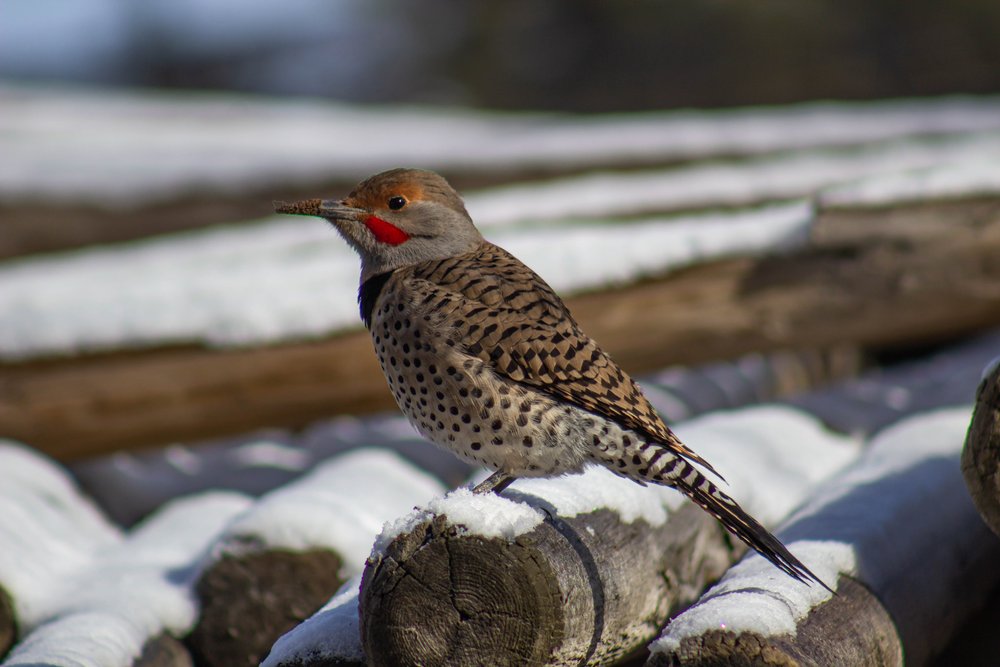
A northern flicker sits upon a snowy rooftop Northern Flicker (Colaptes auratus)
This woodpecker can be found in wooded areas with stands of dead trees. Flickers drum to attract mates and defend territory. The drumming is created by rapidly and sharply beating the tip of the bill on some sort of resonating object.
Although it can hammer on trees like other woodpeckers, the Northern Flicker prefers to find food on the ground. Their chief food is ants. The flicker will dig into the dirt to find them, and it uses its long barbed tongue to lap up the ants.
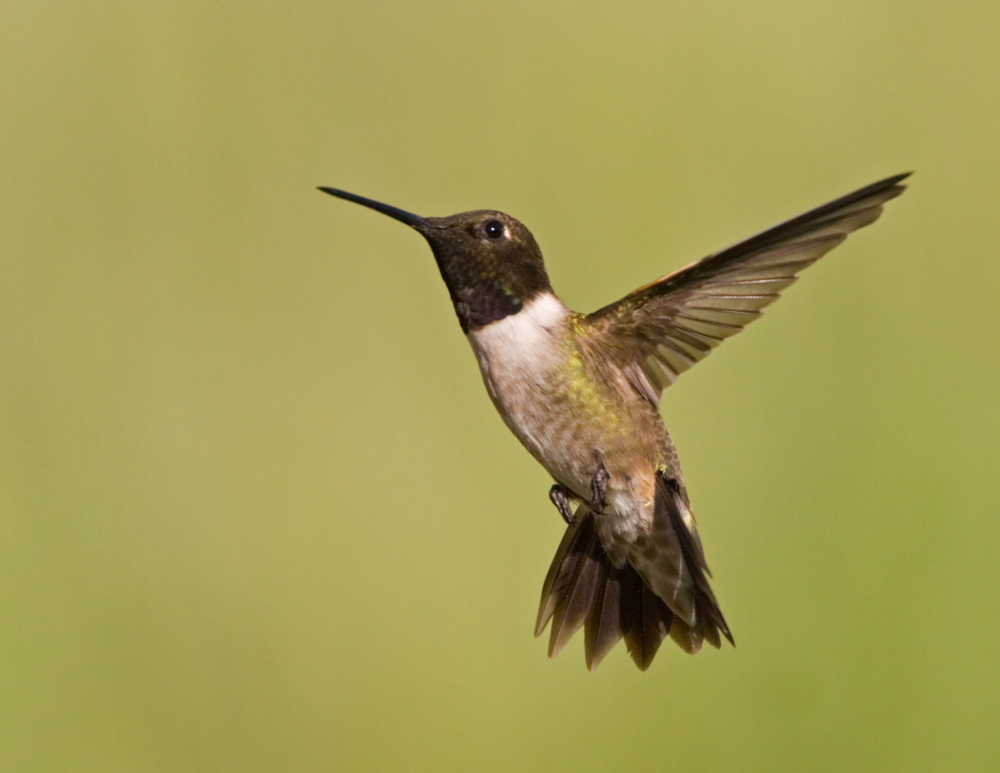
Hummingbird flying in front of a green background Black-chinned Hummingbird (Archilochus alexandri)
The black-chinned hummingbird is one of the most common species of hummingbird in Utah. They are frequently seen during the warmer months. They migrate to southern United States and Mexico for the winter.
These hummingbirds feed on both nectar and insects. They usually feed while hovering, extending its bill deep into the center of the flower. To catch small insects, it may fly out and grab them in midair, or hover to pluck them from foliage.